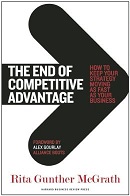Janelle asks: I’m experiencing communication barriers with my direct reports. On two projects, I’ve asked them to take the lead on things but they’ve dropped the ball. What tips can you offer to help with my communication?
Tawny Lees, COO responds:
How frustrating! When making requests, many communication barriers can occur. When you reflect on these requests, were they posed in a direct manner, i.e.: “Will you?”, or indirect, such as “Can you please…?” Indirect requests are not straightforward enough to solicit an immediate yes/no response. Also make sure any request is very specific – you’d be amazed at how often they aren’t! Include:
- Who: will do the work
- What: specific action and/or result needed
- When: time frame
- Why: context/purpose
Then, make sure to listen for a true response, which should indicate a yes, no, an alternative proposal or a commitment to do it at a later time.
One final tip: direct requests might sound strange at first, so we recommend practicing them. Successful use comes from mastering your tone of voice, which should be firm and clear to prevent communication barriers.
For more information, we suggest:
MORE


